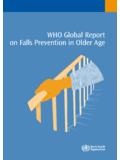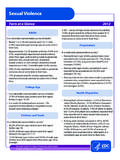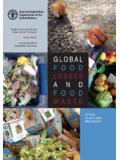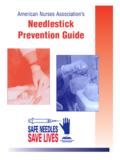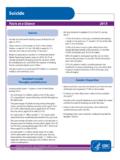Transcription of Prevention and Control of poultry diseases For …
1 Prevention P ti andd Control C t l of poultry diseases For better farm profitability Yoni Segal FAO Consultant l Module Objectives By the end of this session all participants will be able to: Identify the threats to our poultry and how disease agents might h enter a poultry l farm f Identify the costs of diseases and their Prevention Define the three principles of biosecurity: Segregation & Traffic Control Cleaning Cl i Disinfection Identify biosecurity risks present in a poultry farm Exercise: The questions! 1. How a disease can enter a poultry farm ?
2 2. What are the costs involved in a disease outbreak ? 2. 3. How can we prevent and Control a disease outbreak ? 4 What are the costs involved in disease Prevention ? 4. In your group discuss what do you know about the question Record your key points on the flipchart Be prepared to present your answer to the group Take about 10 minutes to complete this task What are the threats to poultry farms? The diseases caused by: Viruses Vi (Newcastle disease , Gumboro, Avian Influenza, Duck plague). Bacteria (Fowl Cholera, Salmonella, Mycoplasma, E.)
3 Coli, Rimerella anatipestifer). Fungi (Aspargilosis, Mould, Mycotoxins). Protozoa and Parasites (Coccidiosis, Intestinal Worms, lice & mites). Which diseases do you see at your farm? HOW diseases MIGHT ENTR poultry FARMS. Sick birds or Carcasses of Infected Birds Pests People Rodents through Flies, Footwear Stray Animals & Clothing Wild birds poultry Contaminated Feed Bags Farm Egg Flats Litter material DOC Infected Contaminated in the Vehicles hatchery &. or Equipment. from breeders Impure Feed water air The infection pressure in relation to: Regional density Farm density Poor sanitation Poor management Limited downtime Multi-age production Concurrent diseases Other species on farm Q.
4 The costs of diseases : poultry mortalities less eggs (less hatchability). Low production performances less meat slow growth rate poor FCR. poor product d t quality lit Financial losses to farmers Due to: - mortalities - low performance - medication - decontamination Human infection and death = zoonosis (in case of Salmonella Salmonella, HPAI). Q. How you can prevent and Control diseases In decreased order of efficacy 1. Implementing Biosecurity 2. Vaccination program 3. Medication Often we use these three in varies combination Remember!
5 - Prevention is always cheaper than cure Q. What are the costs of disease Prevention & Control Y should You h ld iinvestt iin: Better Housing + Equipment But the most important investment should be in: Training + Education Of yourself and your employees about risk reduction behaviours and changing procedures at the farm llayers broilers b il Cost: $/doz eggs $/Kg Cost of disease Treatment Lost production vaccination Tot: Cost of Prevention Procedures & education Better Housing & equipment Tot: USA Data Small commercial producers what are the issues ?
6 Limited resources (money/people/time). High risk because many movements Housing - may not be purpose built - not owned by the producer (rented). Limited technical knowledge and access to information What is Biosecurity Plan Biosecurity plan is a set of practices designed to prevent the entry and spread of infectious diseases into and from a poultryy farm. Biosecurity requires the adoption of a set of attitudes and behaviours by people, to reduce risk in all activities involving poultry production and marketing marketing. Biosecurity plan should focus on Preventing disease agents from entering the farm By keeping potentially infected animals and contaminated objects away from healthy poultry .
7 This requires formation of barriers - Physical and/or p - Conceptual DIRTY AREA. CLEAN. CLEANHOUSE. FARM AREA. AREA. BUFFER AREA = BARRIERS. Dr Yoni Segal Quiz Time 1 Biosecurity is the most effective and the cheapest way to protect your 1. chickens. a. true or b. false 2. Which elements are the most important for disease 's Prevention ? a housing and equipment a. b. training and education 3. What is it the buffer area? a. clean area b. dirty area c. protective area around the farm created by a wide range of procedures Exercise: The question!
8 1 Wh 1. Whatt are th the prerequisites i it tot ensure the th good d health h lth andd maintenance of poultry on farm? 2 What is segregation and traffic Control and how to achieve 2. it on a farm? 3. Wh 3 Whatt is i cleaning l i and d how h to t achieve hi it on a farm? f ? 4. What is disinfection and how to achieve it on a farm? In your group discuss what do you know about the question Record your key points on the flipchart Be prepared to present your answer to the group Take about 10 minutes to complete this task The 3 elements of biosecurity A.
9 S. Segregation & Traffic ff Control C. The most effective form of biosecurity prevent contamination B. Cleaning g The next most effective step - when all dirt is removed remove most (80%) contamination C. Disinfection The h lleastt reliable li bl step t - depends d d on th the quality lit off cleaning l i might kill any remaining contamination Q. Prerequisite: Good bird management g ensuring g the g good health and maintenance of poultry on farm Provide adequate feed, water, temperature, airflow Keep K records d off the th flock fl k : source and number of birds being placed in the farm how many birds died or culled each day (in number and %).
10 Daily feed consumption (in tot and in grs/bird). daily water consumption (in Liters). vaccinations, medications, vitamins Do you keep any records at your farm? Q. A. Segregation & Traffic Control The strongest form of biosecurity and where all effort should be placed !!! Preventing disease agents from entering the farm by keeping potentially infected animals and contaminated objects such as clothing clothing, footwear footwear, vehicles vehicles, equipment equipment, etc, away from healthy poultry . This requires q formation of barriers,, Nothing crosses these barriers unless it has to.











